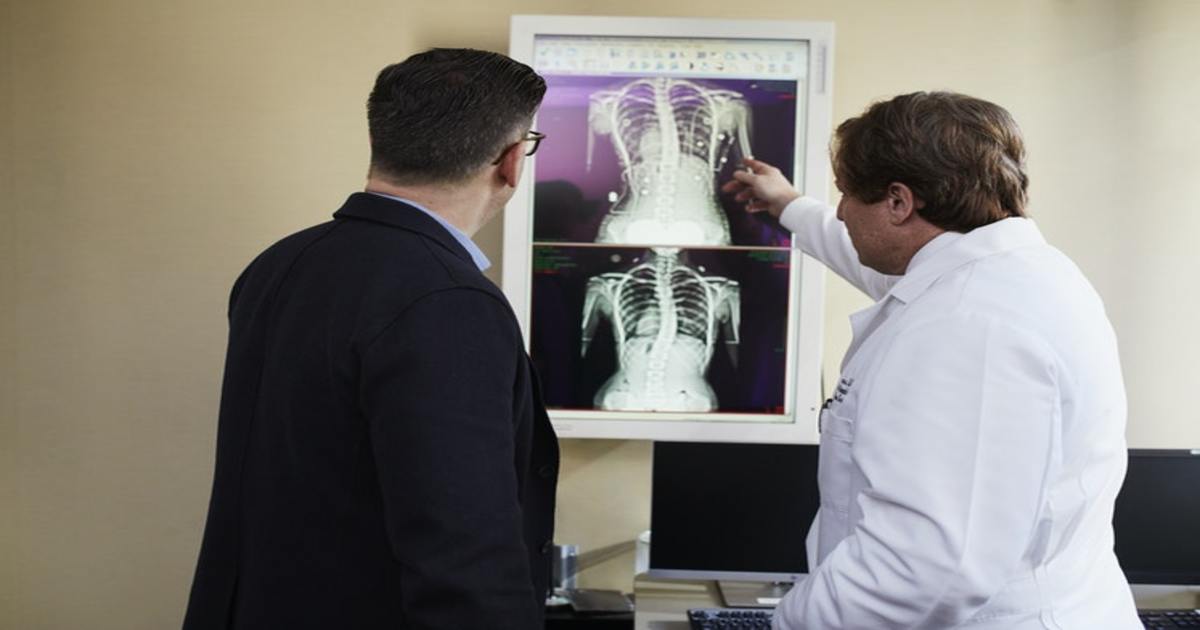
Health Technology, Digital Healthcare
Article | August 16, 2023
Effective Healthcare branding changes how the public perceives a healthcare organization. Brands are all about perceptions. The way your customers perceive your organization determines your brand. That encompasses your doctors, your board members, your nurses, and your patients. The process of healthcare branding helps organizations ensure they are perceived the way they want to be; as trusted, knowledgeable, caring, and experienced.
More than a tagline, name, messaging, or logo, the recognizable feeling that these elements induce is your healthcare company's brand. Healthcare branding ensures that these elements meet in a cohesive system informed by positioning and personality and are constantly implemented across your brand's touchpoints.
Why is Healthcare Branding So Essential?
Healthcare branding was not always so important. Patients had the freedom to select any healthcare provider. Insurance was the principal determiner of their healthcare provider. It depended upon their workplace. Those without insurance got treatment at community clinics and emergency rooms.
As you know, times have changed a lot in a big way. Changing the entire healthcare landscape, the Affordable Care Act put patients in the driving seat. Most of the patients now have access to healthcare insurance and successfully manage their own health. Patients without insurance have the options of out-of-pocket online pharmacies and providers.
Healthcare providers have changed their performance metrics system to value-based assessments such as patient satisfaction. More than treatment, now the emphasis is on prevention. It has become a market that is direct-to-consumer healthcare.
As a result, the consumer has become the controller of the healthcare brand-consumer relationship. As patients have turned empowered consumers, the benefits of healthcare branding have grown to the point that healthcare companies cannot ignore them. If they do, it affects their business.
What are the Benefits of Healthcare Branding?
Effective healthcare branding, directed by research and a clear strategy, has many valuable benefits:
Identify Changing Patient Needs
The needs of patients today have changed from the start of COVID-19. Even when a global pandemic hasn’t fundamentally changed the healthcare landscape, patients’ needs are continually evolving. Healthcare branding gives you the tools to understand evolving patient needs better and rebrand your company to meet them.
Brand research includes qualitative research (including one-on-one patient interviews) and quantitative analysis. Insights gathered from brand research are critical in optimally positioning a healthcare brand. It is vital during dynamic and unpredictable markets, as in what happened during this COVID-19. Beyond brand research, effective healthcare branding ensures your healthcare brand is continually aligned with shifting market trends and their impact on patient needs.
Establish Trust
It isn’t easy to think of a quality more essential to a healthcare organization's success than trust. A healthcare brand is broken or made by the degree to which it is trusted by those it serves.
When it comes to healthcare branding, trust is conveyed through everything from messaging to visual identity. Photography, colors, and typography all contribute profoundly to perceiving a brand as trustworthy. In healthcare branding, verbal identity is more important than visual brand identity in establishing it as an expert in the healthcare space.
Everything from a reassuring, confident voice in its website copy to guides designed to update patients on necessary healthcare topics and regular publication of articles are proven and well-known ways in healthcare branding to build up trust.
Set Your Brand Apart from the Competition
However, trust is not the only thing needed in the modern age for effective healthcare branding. The days, judging a healthcare organization based on its medical practice's reputation alone have gone. Patients have become empowered consumers as time passed. The competition to treat these empowered consumers too has become increasingly fierce. Here comes the importance of effective healthcare branding, tracking all your online and offline activities, and evaluating them every day.
Your healthcare brand is just one among the many other brands for internet-savvy consumers to choose from. First and foremost, all consumer decisions, including patients' decisions, are based on emotions. So, you have to think of ways to persuade your consumers' feelings to help your healthcare branding in the crowded marketplace.
Competitive differentiation is more vital than ever. Effective healthcare branding makes you find out opportunities and ways for differentiation in the challenging and competitive landscape. And, you can capitalize on these opportunities and ways with powerful storytelling and unique positioning.
Improve the Patient Journey
Patient experience, as mentioned earlier, is a game-changer in the healthcare industry today. Healthcare branding gives you various ways to shape and improve patient experience powerfully. After all, a good percentage of patient experience happens outside the healthcare facility these days. The beginning stages of the patient journey are the awareness and consideration stages. Healthcare branding tools, such as content marketing, are critical in influencing patients in these stages.
A website of your healthcare brand can make or break your patient’s pre-treatment experience. It is the selection phase of the patient journey. A premium and well-designed website optimized for conversion will enrich the patients' online experience, looking to book an appointment or answer a question.
Healthcare branding is helpful in defining the patient treatment experience. When correctly leveraged, healthcare branding allows your healthcare brand to enhance the patient journey from when the patient hears about the brand to the moment of finishing the treatment.
At every patient journey stage, healthcare branding fosters patient trust, builds patient loyalty, and reinforces patient-provider relationships.
Takeaway
Modern healthcare companies are operating in a competitive landscape where healthcare branding is more important than ever. Patients have become informed and empowered consumers. Digital healthcare brands have redefined the marketplace. Healthcare branding is vital if your healthcare company hopes to stand out from the rest and develop lasting and meaningful relationships with your patients.
Fortunately, there are many ways to differentiate your healthcare brand and make it sounds unique meaningfully. Positioning, identity, storytelling, and patient experience represent a powerful area where healthcare brands can better align themselves with their patients' needs and stand out from the competition.
Frequently Asked Questions
Why is healthcare branding important?
Healthcare branding helps you effectively project the personality of your healthcare organization and products. A good thought process to brand your healthcare product will make people remember you forever.
What is hospital branding?
Hospital branding is the process of making your healthcare organization be perceived better by potential clients. Effective branding makes your patients remember you through the best patient experience and the organization's external look.
What are the three branding strategies?
There are many effective branding strategies. Line extension, brand extension, and new brand strategy are essential types of branding strategies. You can have any strategy based on the nature of your product.
Read More

Health Technology, Digital Healthcare
Article | September 8, 2023
The healthcare industry is experiencing rapid shifts. Some of this is due to the current pandemic, but much of this evolution was happening even before the COVID-19 outbreak. Understanding and embracing the introduction of new technology into the market will be important for healthcare professionals and patients alike. Here are some of the trends worth keeping tabs on:
Read More

Health Technology, Digital Healthcare
Article | July 14, 2023
The COVID-19 virus (C19) pandemic is turning out to be the event of the century. Even World War seems timid in comparison. We are in the 4th month of the virus (in non-China countries) and have gone past the lockdown in many places. Isn’t it time we re-think the approach? What if there is another wave of C19 coming soon? What if C19 is the first of many such events in the future?
Before we get into analysis and solution design, summarizing the C19 quirks:
While a large section of the affected population is asymptomatic, for some it can be lethal
There isn’t clarity on all the ways C19 spreads
It’s known to affect the lungs, heart, and kidneys in patients with weak immunity
It has been hard to identify a definitive pattern of the virus. Some observations in managing the C19 situation are:
With no vaccine in sight, the end of this epidemic looks months or years away
Health care personnel in hospitals need additional protection to treat patients
Lockdowns lead to severe economic hardship and its repeated application can be damaging
Quarantining people has an economic cost, especially in the weaker sections of society
If one takes a step back to re-think about this, we are primarily solving 2 problems:
Minimise deaths: Minimise the death of C19 and non-C19 patients in this period
Maximise economic growth: The GDP output/growth should equal or higher than pre-C19 levels
One needs to achieve the 2 goals in an environment of rising number of C19 cases.
Minimise deaths
An approach that can be applied to achieve this is:
Data driven health care capacity planning
Build a health repository of all the citizens with details like pre-existing diseases, comorbidity, health status, etc. The repository needs to be updated quarterly to account for patient data changes
This health repository data is combined with the C19 profile (disease susceptibility) and/or other seasonal diseases to determine the healthcare capacity (medicines, doctors, etc.) needed
The healthcare capacity deficit/excess needs to be analysed in categories (beds, equipment, medicine, personnel, etc.) and regions (city, state, etc.) and actions taken accordingly
Regular capacity management will ensure patients aren’t deprived of timely treatment. In addition, such planning helps in the equitable distribution of healthcare across regions and optimising health care costs. Healthcare sector is better prepared to scale-up/down their operations
Based on the analysis citizens can be informed about their probability of needing hospitalisation on contracting C19. Citizens with a higher health risk on C19 infection should be personally trained on prevention and tips to manage the disease on occurrence
The diagram below explains the process
Mechanism to increase hospital capacity without cost escalation
Due to the nature of C19, health personnel are prone to infection and their safety is a big issue. There is also a shortage of hospitable beds available. Even non-C19 patients aren’t getting the required treatment because health personnel seek it as a risk. This resulted in, healthcare costs going up and availability reducing.
To mitigate such issues, hospital layouts may need to be altered (as shown in the diagram below). The altered layout improves hospital capacity and availability of health care personnel. It also reduces the need for the arduous C19 protection procedures. Such procedures reduce the patient treatment capacity and puts a toll on hospital management.
Over a period, the number of recovered C19 persons are going to increase significantly. We need to start tapping into their services to reduce the burden on the system. The hospitals need to be divided into 3 zones. The hospital zoning illustration shown below explains how this could be done. In the diagram, patients are shown in green and health care personnel are in light red.
**Assumption: Infected and recovered C19 patients are immune to the disease. This is not clearly established
Better enforcement of social factors
The other reason for high number of infections in countries like India is a glaring disregard in following C19 rules in public places and the laxity in enforcement. Enforcement covers 2 parts, tracking incidents of violation and penalising the behaviour. Government should use modern mechanisms like crowd sourcing to track incidents and ride on the growing public fear to ensure penalty enforcement succeeds. The C19 pandemic has exposed governance limitations in not just following C19 rules, but also in other areas of public safety like road travel, sanitation, dietary habits, etc.
Maximise economic growth
The earlier lockdown has strained the economy. Adequate measures need to be taken to get the economy back on track. Some of the areas that need to be addressed are:
One needs to evaluate the development needs of the country in different categories like growth impetus factors (e.g. building roads, electricity capacity increase), social factors (e.g. waste water treatment plants, health care capacity), and environmental factors (e.g. solar energy generation, EV charging stations). Governments need to accelerate funding in such projects so that that large numbers of unemployed people are hired and trained. Besides giving an immediate boost to the ailing economy such projects have a future payback. The governments should not get bogged down by the huge fiscal deficit such measures can create. Such a mechanism to get money out in the economy is far than better measures like QE (Quantitative Easing) or free money transfer into people’s bank accounts
Certain items like smartphone, internet, masks, etc. have become critical (for work, education, critical government announcements). It’s essential to subsidise or reduce taxes so that these items are affordable and accessible to everyone without a financial impact
The government shouldn’t put too many C19 related controls on service offerings (e.g. shops, schools, restaurants, cabs). Putting many controls increases the cost of the service which neither the seller not buyer is willing or able to pay. Where controls are put, the Govt should bear the costs or reduce taxes or figure out a mechanism so that the cost can be absorbed.
An event like the C19 pandemic is a great opportunity to rationalise development imbalances in the country. Government funding should be channelized more to under-developed regions. This drives growth in regions that need it most. It also prevents excess migration that has resulted in uncontrolled and bad urbanisation that has made C19 management hard (guidelines like social distance are impossible to follow)
Post-C19 lockdown, the business environment (need for sanitizers, masks, home furniture) has changed. To make people employable in new flourishing businesses there could be a need to re-skill people. Such an initiative can be taken up by the public/private sector
The number of C19 infected asymptomatic patients is going to keep increasing. Building an economy around them (existing, recovered C19 patients) may not be a far-fetched idea. E.g. jobs for C19 infected daily wage earners, C19 infected taxi drivers to transport C19 patients, etc.
In the last 100 years, mankind has conquered the destructive aspects of many a disease and natural mishap (hurricanes, floods, etc.). Human lives lost in such events has dramatically dropped over the years and our preparedness has never been this good. Nature seems to have caught up with mankind’s big strides in science and technology. C19 has been hard to reign in with no breakthrough yet. The C19 pandemic is here to stay for the near future. The more we accept this reality and change ourselves to live with it amidst us, the faster we can return to a new normal. A quote from Edward Jenner (inventor of Small Pox) seems apt in the situation – “The deviation of man from the state in which he was originally placed by nature seems to have proved to him a prolific source of diseases”.
Read More

Article | October 21, 2020
Do you know a friend or loved one who suffers from fear, anxiety, and depression and do not know what to do?
It can be difficult to watch someone you know struggle with their mental health and not be able to do anything about it.
As a result, here are 8 important tips on how to help the person you care about in these kinds of situations.
1. Learn as much as you can in managing anxiety and depression: There are many books and information that will educate you on how to deal with fear and anxiety. Share this information with the person who is struggling with their mental health.
2. Be understanding and patient with the person struggling: Dealing with depression and anxiety can be difficult for the person so do not add more problems than what is already there. Do not get into arguments with the person who is having a difficult time with their mental health.
3. Talk to the person instead of talking at them: It is important not to lecture the person who is struggling with anxiety and depression. Talk to the person about their issues without getting upset. Most people will listen if you approach them in the right manner.
4. Remind the person the importance of getting help: One way to convince the person who is struggling with fear and depression is to tell them what may happen if they don't get some assistance. Anxiety and depression can be difficult to manage and usually these mental health issues won't go away by themselves.
5. Find out why the person won't seek assistance: Address the issues on why the person will not get the necessary help. Many people who are struggling are fearful and frustrated. Try to find out the reasons why he or she won't get the help they need and then try to find ways that will overcome their resistance of seeking treatment.
6. Join a local support group: There are many mental health support groups in your area that can help you. Many hospitals, churches, and counselors in your area will be able to provide you with a list of groups. These mental health organizations will be supportive of your situation and they can give you additional advice on how to help the person who is struggling.
7. Talk to someone who has been there: Find somebody who used to struggle with fear, anxiety, or depression and have them talk to the person who is struggling. He or she could use their past experiences to try to reason with the person that you care about, and they might be able to use their insights to convince the individual to seek treatment.
8. Talk to a counselor: Talk to a professional counselor on how you can help your friend or relative with their mental health struggles. A counselor can give you advice and ideas on how to help out your friend. Your main goal is to get the person who is struggling to seek help from a mental health specialist.
Read More